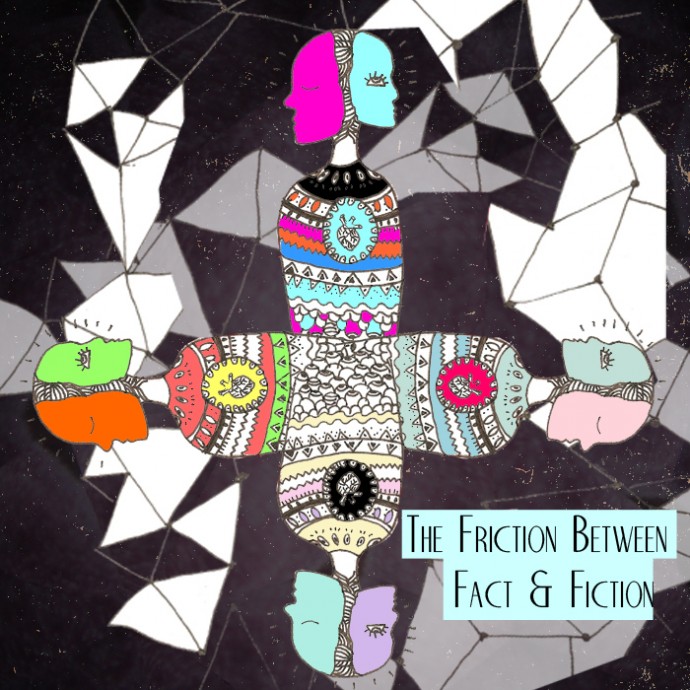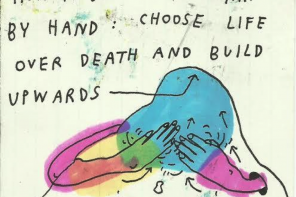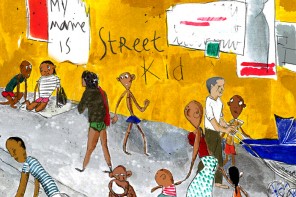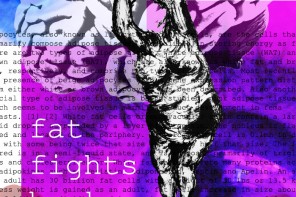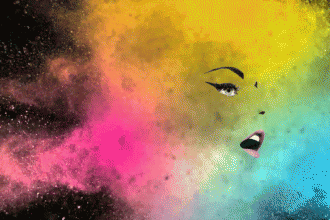2012 saw the release of Dutch author Maan Leo’s successful debut novel Ik ben Maan (I Am Maan), in which she exposes a semi-autobiographical caricature by peeling away the multiple layers that make up who she is. Bright and bold, one would expect to find a solid core underneath, a true self that explains, forgives, and justifies all these layers. However, Maan rejects this idea and dispels the contemporary cultural dogma of ‘being yourself’ that society is all too happy to encourage us to embody. She spoke to Sensa Nostra about how she defines herself and why she loves fiction.
I’ve always been fascinated by storytelling. For me there is a great sense of storytelling in daily life, and of decorating your own life story. I’ve always done that. When people ask me, “What do you do?” I struggle to only mention the things that are true. I obviously try not to lie to people, but the idea that I could embellish my life story and not have the other person know what is real or not fascinates me. That is where I come across the fine line between fact and fiction. It’s a friction point where you decide what you should tell about yourself, and what you would like to tell about yourself.
Nowadays, people seem to be obsessed with truth and with things that are real. When you go to the cinema, there are countless movie posters, many with the phrase “based on a true story.” Why is that a selling point? Why does that make a film more interesting? I prefer fiction, especially in my daily life. And I love fictionalizing. In my novel, many things are at least sort of true: I do have a much older husband, I do want a rabbit, I do have very large breasts, and I do passionately hate children. However, if you would ask me how much of my novel is true, I would say that’s irrelevant. The power of the book should be in the words, in the style, in the story. It shouldn’t be reliant on the external truth. I’ll admit, to say that truth is irrelevant to a novel called I Am Maan is quite an unfair answer, because I’m also tempting the reader to find out more. The same goes for my blog. Although many readers will accept that much of novel is fictionalized, they often remain convinced that everything on my blog must be true. But even that isn’t the case.
In my life, fictionalizing goes beyond the written word and extends to my daily life and personality. I love dressing up, whether it is in latex and leather or in super feminine, flowery, burlesque feathers. Some people may think that dressing up is a way to cover up or hide oneself, but to me dressing up is my hobby. It could be comparable to an athlete who starts to feel down after not playing sports for a while. If I stop dressing up or don’t enjoy it anymore, it’s usually a sign that I’m becoming depressed. I’m fascinated by how far you can go and still look natural or ‘real’. So I’m now experimenting with very light facial makeup. For example, I now have these bright orange eyebrows and sometimes on the weekend I have blue or green eyebrows. I tried to make them even more orange, but then people started looking weirdly at me, so I think I’ve reached the limits of real and natural.
It’s all part of playing a character, but I think that that has an unfairly bad reputation. Many people say, “You have to be you” or “You have to find and be yourself.” Those exclamations are uninteresting to me, and I don’t feel as though the dogma of ‘finding yourself’ or ‘being yourself’ applies to my life in any way. I am a completely different person when I’m Head of Communications at the university where I work, interacting with students, faculty, and staff, and I’m a very different person when I’m interacting with parents or the press. When I go home and I’m around my husband, or if I go to a burlesque or fetish parties, I’m, again, an entirely different person. Beauty to me is in multiplicity and contradictions within your personality. All the layers of my self have a function and all are equally valuable. I need those layers. I like the freedom of being able to express multiple sides of myself and to embody different things. I’m not ashamed of my different layers and they aren’t secrets.
Nevertheless, to mix my different selves in the various circumstances in which I find myself in my daily life could pose a problem. Showing up in a corset in front of a TV camera would not be a brilliant idea and neither would acting like a child around university faculty. Therefore, the idea of a single or fundamental self does not make sense to me. All my layers are part of me, but there’s no one true self. Instead, my true self is all those layers combined.
My novel is in many ways based on the idea of a kaleidoscope. You have all these different crystals and when you turn them around, you have a different image, but they’re still the same crystals. I came up with a structure that allowed me to describe the character not in a linear fashion, but in an anecdotal way, based on different aspects of her personality and life. It’s about the building blocks that make up her life and who she is: her career, her love life, her body, her sex life, her preferences, being bipolar, stuttering, etc. When you put all the layers together, you get who she is.
Having multiple layers can be problematic, however. This is especially the case when you have to manage expectations, and most people expect and prefer consistency in character. Nevertheless, I think multiplicity has an educational role in life. I think it’s important for people to know that you can attend BDSM parties while having a managerial role at a company, for example, or that you can have large breasts and be smart. It’s important to value these seemingly contradictory things and the friction that appears as a result—to surprise people in that sense. As for truth, truth is of course important. But I still love storytelling and adore the fiction literature, theatre, and art bring to my life.

